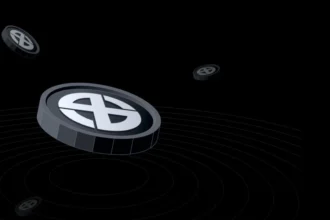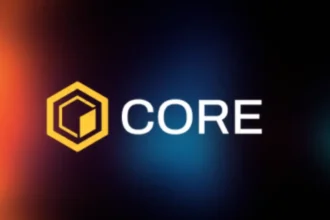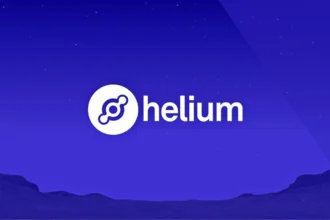The world of blockchain technology is continuously evolving, with new projects emerging to address different challenges in the digital space. One such project that has attracted attention due to its unique approach is Hedera (HBAR). Hedera is designed to provide fast, secure, and scalable solutions for decentralized applications, particularly in industries where performance and speed are crucial. In this article, we will dive into what Hedera (HBAR) is, its core features, its price prediction for 2025, and future trends that could shape its growth in the coming years.
What Is Hedera (HBAR)?
Hedera is a public distributed ledger that aims to improve the scalability, security, and performance of blockchain-based networks. Unlike traditional blockchain networks like Bitcoin or Ethereum, Hedera utilizes a unique consensus mechanism known as the Hashgraph protocol. The Hashgraph consensus algorithm allows Hedera to provide higher throughput and faster transaction times, which is critical for the next-generation applications that require high-speed and secure transactions.
Hedera’s network is designed to address the challenges that traditional blockchains face, such as high transaction costs, slow confirmation times, and scalability issues. With Hedera’s fast and secure infrastructure, enterprises, developers, and users can engage in real-time transactions without the limitations commonly found on other blockchains.
At the core of Hedera’s ecosystem is HBAR, the native cryptocurrency of the Hedera network. HBAR serves multiple purposes within the ecosystem, including paying for transactions, fueling the network’s security, and acting as a staking token for participants in the consensus mechanism. Hedera is governed by a council of prominent companies and organizations, giving it a more centralized governance model compared to traditional blockchain projects.
Key Features of Hedera (HBAR)
- Hashgraph Consensus Algorithm: The Hashgraph consensus algorithm is what differentiates Hedera from traditional blockchain networks. Unlike blockchain, where miners compete to validate transactions, Hashgraph uses a gossip-about-gossip protocol combined with virtual voting to achieve consensus in a more energy-efficient manner. This innovation enables Hedera to process transactions in a fraction of the time and at a much lower cost compared to conventional blockchain networks.
- Speed and Scalability: Hedera’s Hashgraph technology provides one of the fastest transaction speeds in the industry. Hedera can handle thousands of transactions per second (TPS), which is exponentially higher than networks like Bitcoin and Ethereum. This makes Hedera suitable for real-time applications such as microtransactions, smart contracts, and decentralized finance (DeFi).
- Security and Governance: Hedera’s network is designed to be secure from both malicious actors and bad actors within the ecosystem. Its unique governance model, where Hedera’s governing council includes leading companies like Google, IBM, and Boeing, ensures that the network is secure and well-maintained. The network uses a Byzantine Fault Tolerant (BFT) consensus model, which guarantees that even if up to one-third of the nodes fail or act maliciously, the network will still be able to operate securely.
- Low Transaction Fees: Hedera provides low transaction costs, an important feature for applications that require frequent, small transactions. This makes Hedera an ideal network for businesses and developers to integrate blockchain technology without the high costs associated with other blockchains.
- Smart Contracts and Tokenization: Hedera allows developers to create smart contracts and tokenized assets on its platform. Smart contracts on Hedera are designed to run efficiently, and developers can build decentralized applications (dApps) to power various industries, such as finance, supply chain, and gaming.
- Governance Model: The Hedera Governing Council consists of 39 global organizations that oversee the development and management of the Hedera network. This governance structure provides a level of stability and trust for the platform. Members of the council include reputable names such as Google, IBM, and Boeing, providing Hedera with credibility and long-term sustainability.
Hedera HBAR Use Cases and Adoption
- Enterprise Adoption: Hedera has been specifically designed with enterprise needs in mind. With its high scalability, fast transaction speeds, and low transaction costs, Hedera is well-suited for businesses that need to process a large volume of transactions in real-time. Several companies, including Google and IBM, have adopted Hedera’s technology for their enterprise-level blockchain solutions.
- DeFi and Tokenization: The DeFi space has seen explosive growth in recent years, and Hedera is positioning itself as a player in this ecosystem. HBAR tokens can be used within decentralized finance applications, enabling users to stake, lend, borrow, and engage in various financial activities. Hedera’s platform also allows developers to create tokenized assets, providing a simple way to create and manage digital assets on its network.
- Supply Chain Management: Hedera’s distributed ledger technology is perfect for managing and tracking supply chain data. Its ability to process high volumes of transactions quickly and securely ensures transparency and traceability of goods, making it an attractive option for businesses looking to improve their supply chain systems.
- Healthcare: The healthcare industry is increasingly looking for secure, efficient ways to manage patient data. Hedera’s platform can help with this by enabling secure data storage and sharing while ensuring compliance with regulations like HIPAA.
- NFTs: Hedera is also making strides in the NFT space. Its low transaction fees and fast processing times make it a good platform for creating and trading NFTs (non-fungible tokens), which have become popular in the gaming, art, and entertainment industries.
Price Prediction for Hedera (HBAR) in 2025
Like all cryptocurrencies, predicting the price of Hedera (HBAR) is speculative, but we can take a look at several factors that might influence its price over the next few years.
Factors That Could Impact Hedera’s Price
- Enterprise Adoption: As more enterprises adopt Hedera’s blockchain solutions, the demand for HBAR could increase, leading to higher prices. Google, IBM, and Boeing are already involved, and if more organizations follow suit, the demand for Hedera’s services and HBAR tokens could rise substantially.
- DeFi Growth: The DeFi market is expanding rapidly, and Hedera’s role in this space will likely increase as more developers build on the platform. If DeFi projects gain traction on Hedera, it could lead to higher usage and demand for HBAR.
- Continued Innovation: As Hedera continues to innovate with its Hashgraph consensus and provide solutions that are faster and more scalable than other blockchain networks, the platform’s value could appreciate over time.
- Market Sentiment: Hedera’s price will be influenced by overall market sentiment and the performance of the broader cryptocurrency market. If cryptocurrencies continue to gain mainstream acceptance, HBAR could see an increase in value.
Price Prediction Scenarios for Hedera (HBAR) in 2025
- Optimistic Scenario: If Hedera becomes a dominant player in the blockchain space and continues to attract enterprise adoption and DeFi projects, we could see HBAR reach between $10 to $20 by 2025.
- Moderate Scenario: In a more moderate market scenario, with steady growth and adoption, HBAR may be valued between $5 to $10 by 2025.
- Conservative Scenario: In a less optimistic case where growth is slow, and adoption is gradual, HBAR may see prices ranging from $1 to $5 by 2025.
Future Trends for Hedera (HBAR)
- Expansion of Enterprise Use Cases: As more enterprises look to blockchain for secure and efficient solutions, Hedera could see increased use in sectors like finance, healthcare, and supply chain management. Its ability to process large volumes of transactions quickly will make it a preferred choice for large-scale applications.
- Integration with CBDCs: As central banks explore the use of Central Bank Digital Currencies (CBDCs), Hedera could position itself as the underlying infrastructure for these digital currencies due to its speed, security, and scalability.
- Increased Focus on Sustainability: Hedera’s energy-efficient consensus model places it ahead of many other blockchain projects, especially in the face of increasing concerns about blockchain’s environmental impact. As sustainability becomes a more prominent issue, Hedera’s eco-friendly approach may attract more users.
Conclusion
Hedera (HBAR) is a unique blockchain project designed to solve some of the key issues facing traditional blockchains, such as scalability, speed, and transaction costs. Through its Hashgraph consensus and enterprise adoption, Hedera has positioned itself as a key player in the future of decentralized applications and financial solutions.
With increased enterprise adoption, growth in DeFi, and continued technological advancements, Hedera could become one of the most significant blockchain networks in the coming years. Investors and developers alike should keep an eye on HBAR as it has the potential to reach new heights by 2025.
Disclaimer: This article is for informational purposes only and does not constitute financial advice. Always conduct your own research before investing in cryptocurrencies.



